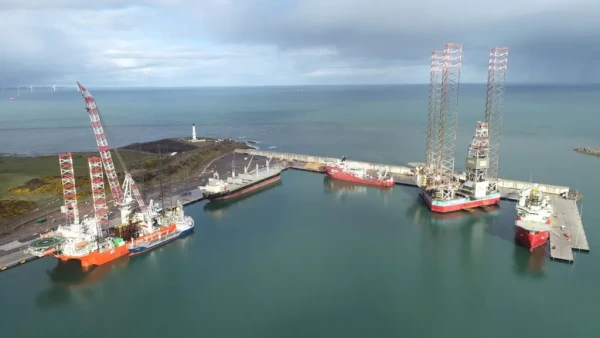Our Views
Facing the paradigm shift in urban mobility: what can cities do?
A new context
Mobility in cities is rapidly changing. The rise of megacities and the relevant growth of mid-size cities in emerging economies create multiple problems to local public administrators. Urban population represents 54% of global population today, but the forecasts are for this proportion to increase up to 63% by 2040 (Europe has today 68% of its population living in cities). As illustrated in the figure below, this forecast implies that 1,800 million more of souls will live in cities.

But urbanization is not the only trend affecting urban mobility. The technological developments of our era are fostering the creation of completely new systems of transportation. Even more relevant in cities of emerging economies, new business models like taxi-hailing, ride-sharing or car/moto/bike sharing systems are appearing every day. Only in Nairobi there are more than eight Uber-type options (including Uber of course).
The new technologies (clean vehicles, autonomous driving, big data, internet-of-things, etc) are paving the way to new advancements in urban mobility. At the same time, our societies and businesses are also moving fast, with millennials getting a more relevant role in society and new business models rising sectors (e.g. asset-light strategies, as applied by Facebook, Airbnb or Uber).
Existing transport systems are adapting to all these new changes, with sustainability, connectivity and multi-modality gaining relevance. Improving the use of existing transport infrastructure out of peak hours (e.g. through active demand management) is a good example of how planners and operators of existing systems try to maximize their assets.

The new urban mobility
All these changes grouped are signaling that a paradigm shift in urban mobility is happening. The shift has a main driver: the inhabitants of our cities are moving from “owning” more and more private vehicles to “using” them in more different ways. The supply of mobility options is becoming very sophisticated, and this is happening in every city of the planet (and very specially in megacities in emerging economies). From a scenario of limited public transport options and dominance of the private car, we are seeing a range of options to move emerge in many cities:
- Bike sharing systems and more bike lanes overall giving a new role to bicycles
- Car sharing systems
- Taxi haling apps (Uber-type)
- Ride sharing apps of different types of vehicles
- Many other types of apps to improve urban mobility, such as integrated mobility apps (apps to help us to combine different means of transport and indicate the best itinerary) or smart parking apps (to help us to park our cars more efficiently)
The user of all these new systems can still own his own car or not owning any car at all. Even owners of private cars are becoming more multi-modal and deciding to leave their cars parked to use other of the new options depending on the trips.

What is clear is that in this new environment, local governments need to play a more relevant role, and will need to coordinate dialogue and discussions among competing systems, plan the growth of our cities and at the same time plan its mobility, regulate the use of the different transport systems, especially when public infrastructure is affected (e.g. dockless bike-sharing systems, parking of car-sharing systems vehicles, charge of electric vehicles, etc), and promote some uses vs other based on the mobility strategy defined for their cities.
Implications for urban infrastructure
This paradigm shift, as the figure below shows, is a great opportunity for local public administrators to configure more modern cities with multi-modal, integrated and sustainable transport systems.

The impact of this shift will be different depending on the type of city. For mature cities, with good public transport systems, the impacts will be more limited. But in those cities with more predominance of the private vehicle, specially if the population density is high, the impacts of the shift can be tremendous and the complexity of the new situations almost unmanageable for local administrations.
The good news for fast-growing cities in emerging economies is that there are tools and solutions, but new behaviors, more collaborative and open to innovation are needed. From integrating the new transport systems in public infrastructure (car parks, public transport) to optimize the use of existing infrastructure (e.g. through active demand management using technology and mobile apps), mobility managers within local and regional governments must work with a complete new range of solutions. As part of this range, a better usage of data and information is crucial. Sharing open data and developing tools based on that data will become the normality for many cities. Ensuring cooperation among the different means, fostering clean technologies and reducing the number of private cars in the streets, giving more relevance to pedestrians and bicycles represent some of the steps to this new scenario.
What can cities do?
Finally, and to translate the ideas in this article to potential actions, what can cities and their responsible of mobility do?
- Start with a strategic plan for mobility: state clear targets in a defined time horizon, a vision, objectives and specific initiatives
- Plan for new urban infrastructure to achieve this vision
- Analyze improvement opportunities in existing urban infrastructure
- Define public-private partnerships regarding urban mobility, even in more innovative fields, with mobility apps, telecom or IT companies
- Generate open data, static and in real time, for its utilization by third parties
- Open dialogue with suppliers of new transport systems, to understand their needs and create pilot projects
- Develop smart infrastructure based on sensors: traffic lights, street lights, bus or specific lanes, etc
- Keep updated information on the new transport systems operators in the city
The paradigm shift is here and is happening fast. Local public officials need to recognize this new reality and react in a well-structured and integrated course of action.










